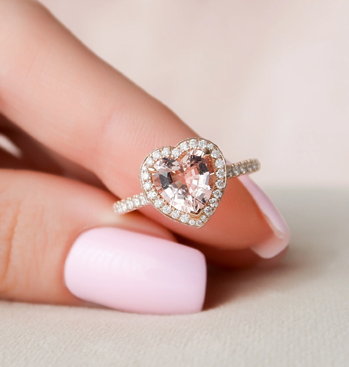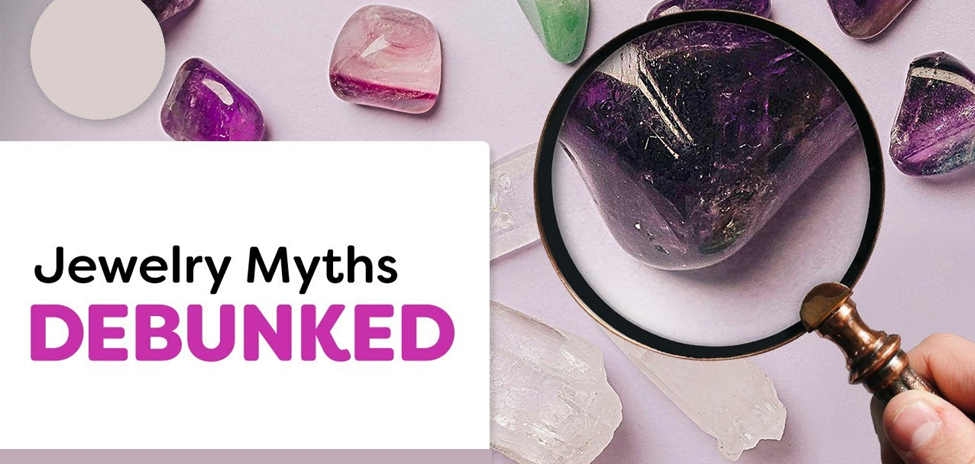In the dazzling world of jewelry, myths and misconceptions often abound, perpetuated by misleading marketing tactics and outdated beliefs. As consumers, it’s essential to separate fact from fiction to make informed decisions when purchasing precious pieces. Join us as we debunk common jewelry myths and shed light on deceptive marketing practices.
Myth #1: Diamonds are the Only Symbol of Love and Commitment
While diamonds have long been associated with romance and eternal love, they are by no means the only option for expressing affection. Other gemstones, such as sapphires, rubies, and emeralds, hold deep symbolic meanings and can be equally meaningful choices for engagement rings and anniversary gift.
Misleading Marketing: Some jewelry advertisements may suggest that the value of your love is directly correlated with the size or cost of a diamond. However, true love knows no price tag, and the significance of a piece lies in the sentiment behind it, not its monetary value.

Myth #2: The Higher the Price, the Better the Quality
Price is not always indicative of quality when it comes to jewelry. While luxurious brands often command premium prices, craftsmanship, materials, and design should be the primary factors considered when assessing quality. Additionally, factors such as brand prestige and marketing expenses can inflate prices without necessarily reflecting superior craftsmanship.
Misleading Marketing: Some jewelry retailers may employ tactics to create a sense of exclusivity and prestige around their products, leading consumers to believe that higher prices equate to superior quality. However, savvy shoppers should look beyond price tags and prioritize factors such as craftsmanship, gemstone quality, and ethical sourcing practices.
Myth #3: Gold-Plated Jewelry is Not Worth Investing In
Gold-plated jewelry, while more affordable than solid gold pieces, can still be a valuable addition to your collection. Gold plating involves depositing a layer of gold onto a base metal, creating the appearance of solid gold at a fraction of the cost. With proper care, gold-plated jewelry can maintain its beauty and luster for years to come.
Misleading Marketing: Some marketers may dismiss gold-plated jewelry as inferior or disposable, steering consumers towards more expensive options. However, gold-plated pieces offer a budget-friendly alternative for those seeking the look of gold without the hefty price tag.
Myth #4: Lab-Created Gemstones Are Not as Desirable as Natural Gemstones
Lab-created gemstones, also known as synthetic or cultured gemstones, are chemically identical to their natural counterparts but are created in controlled laboratory environments. These gemstones offer several advantages, including ethical sourcing, consistent quality, and affordability, making them increasingly popular among eco-conscious consumers.
Misleading Marketing: Some jewelry retailers may perpetuate the misconception that lab-created gemstones are inferior or less valuable than natural gemstones. However, the distinction between natural and lab-created gemstones is primarily a matter of origin, with both options offering their own unique advantages.

Conclusion
In conclusion, navigating the world of jewelry requires a discerning eye and a willingness to challenge conventional wisdom. By debunking myths and questioning misleading marketing tactics, consumers can make informed decisions and truly appreciate the beauty and craftsmanship of their jewelry pieces. Remember, the true value of jewelry lies not in myths or marketing hype, but in the joy it brings and the stories it tells.

